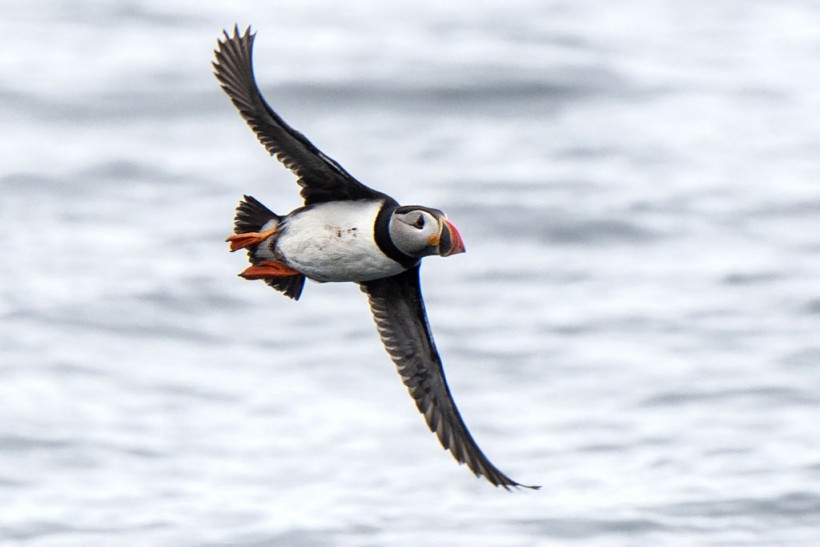The recent report raised concerns about the latest discovery of the Atlantic Puffin in Canada. Researchers found that some suffered from starvation and the impacts of ocean warming.
This year, Canada recorded prolonged dry conditions and raging wildfires. Residents, forests and wildfires have been affected, exacerbated by warmer weather.
The largest Atlantic puffins thrive in Eastern North America, the North Atlantic, Iceland, Canada and parts of the US. They usually prefer colder waters.
The Atlantic puffins can be recognizable by their colorful colors with black, white and orange appearance. However, recent reports noted the decreasing numbers of Atlantic puffins due to the following threats:
- Warming of ocean waters and climate change
- Fishing gear entanglement
- Predation and Hunting
- Contamination and oil spills
- Lack of food sources
Atlantic Puffin in Canada Suffered From Starvation

Atlantic puffin. Researchers discovered that some of the largest Atlantic puffins in Canada have suffered from starvation and ocean warming. The seabirds were shown to be half in their usual size and weight.
In Canada, researchers discovered the few numbers of Atlantic Puffins that visited the Witless Bay Ecological Reserve on Newfoundland's Avalon Peninsula during the summer.
The report noted that some birds were smaller than usual and that the Atlantic Puffins suffered from starvation.
Atlantic Puffins are sociable seabirds and are best at swimming to look for potential food sources, feeding on mollusks, crustaceans, shrimp and small fish. They are seen to breed in cold areas in Eastern North America and Northwest Europe.
In addition, warming waters and climate change can limit the food for the seabirds, affecting their population. The oil spills and extreme weather events also impact their nesting and food areas.
Meanwhile, the introduction of rats and foxes has made it challenging for the said seabirds to survive amidst the increasing predation of Great Black-backed Gulls and Great Skuas.
Despite the decreasing numbers, the species of the Atlantic puffins is stable. However, continuous monitoring of the puffins is crucial to save them from devastating decline, especially the threats of shifting fish populations.
Interesting Facts About the Atlantic Puffin
The Atlantic Puffin is also known as Little Brother with the scientific name of Fratercula arctica. The puffin colony is known as a burrow, which they are found in nesting sites.
The colony is more active during the night. They can nest in mountain cliffs, rocky areas and valley shoulders.
Despite their large numbers, they are considered silent while staying in the sea. When the female Atlantic puffin's egg hatches, the mother seabird will spend months looking after their young in nesting areas. They can only lay one egg.
In Canada, the Atlantic Puff is famous in Labrador and Newfoundland.
Meanwhile, the male reportedly protects the nest from potential threats of predators as the mother incubates the chick.
The other names associated with Atlantic puffins are sea parrots, pufflings and clowns of the sea.
Related Article: Atlantic Canada Prolonged Dry Conditions: Lack of Rainfall Likely Until October Due to High-Pressure
For more similar stories, don't forget to follow Nature World News.
© 2024 NatureWorldNews.com All rights reserved. Do not reproduce without permission.



![Climate Change is Reducing Dust Levels Worldwide as Arctic Temperature Warms [Study]](https://1471793142.rsc.cdn77.org/data/thumbs/full/70320/280/157/50/40/climate-change-is-reducing-dust-levels-worldwide-as-arctic-temperature-warms-study.jpg)

